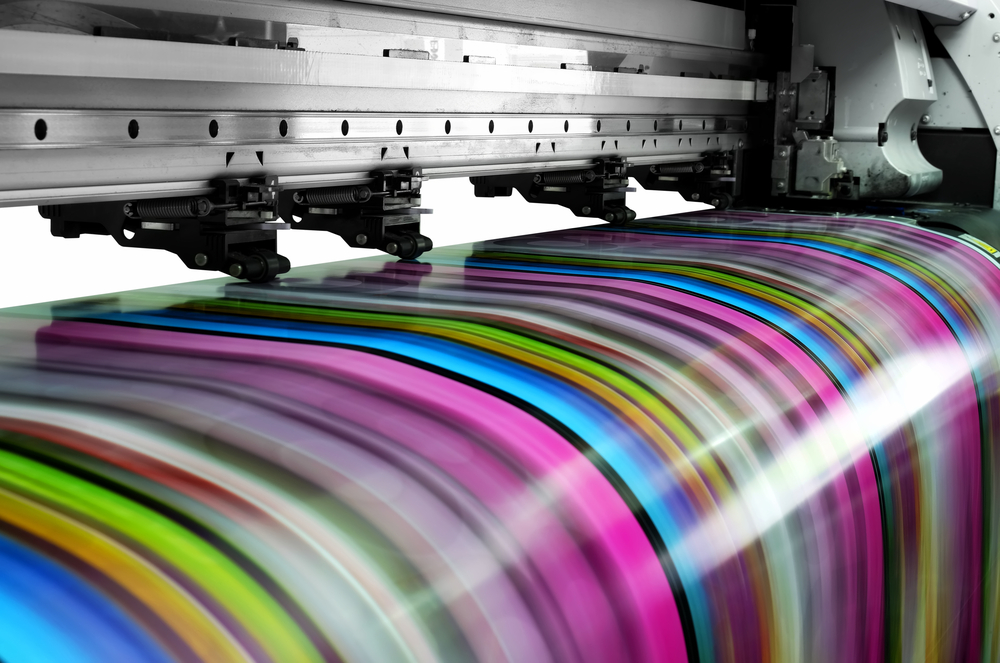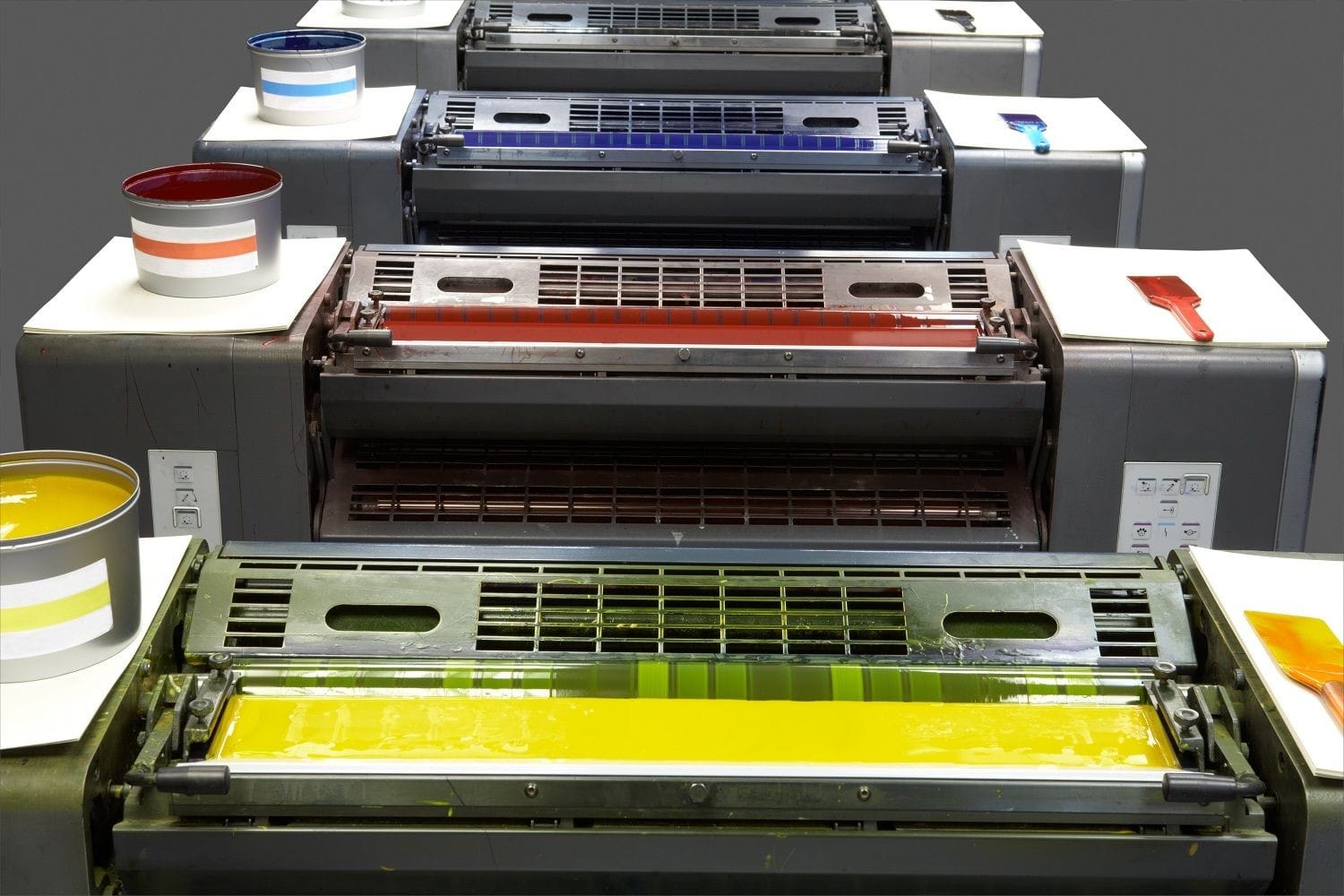The Necessary Guide to Recognizing Litho Printing and Its Applications
Litho printing stands as a substantial method in the printing market, rooted in the principles of oil and water repulsion. This strategy not only supplies premium images yet also accommodates various business requirements. Its applications vary from advertising products to packaging, showcasing its convenience. As the market adapts to brand-new technologies, the advancement of litho printing questions about its future and significance in an electronic landscape. What lies in advance for this enduring technique?

What Is Litho Printing?
Litho printing, a widely utilized printing method, counts on the concept of oil and water repulsion. This approach uses a level printing surface area, typically a metal plate, which is treated to guarantee that the image areas are receptive to oil-based inks while the non-image areas repel them. The process starts with the creation of a photo on home plate, often through illustration or photo methods. As soon as the photo is prepared, home plate is moistened with water, complied with by the application of ink. The ink adheres only to the image locations, enabling specific recreation of graphics and text. Litho printing is favored for its ability to produce high-quality prints with great information and lively colors. It is typically used in business applications, consisting of newspapers, magazines, and product packaging, showcasing its convenience and performance in satisfying the demands of modern-day printing.
The Background of Lithography
Although lithography is a contemporary printing staple, its origins map back to the late 18th century when German dramatist Alois Senefelder created the strategy in 1796. At first developed as a method for recreating messages and images, lithography utilized a level stone surface area to produce prints through a chemical procedure. Senefelder's technology permitted better versatility and imaginative expression compared to previous printing methods.By the 19th century, lithography got widespread acceptance, coming to be a popular selection amongst artists and authors. It made it possible for the automation of images, maps, and posters, notably affecting the printing sector. The technique even more advanced with the intro of lithographic presses, enhancing effectiveness and quality.As the commercial revolution progressed, lithography adjusted to fulfill the needs of commercial printing, paving the method for modern-day applications. Today, it continues to be an important technique in various markets, consisting of posting, packaging, and fine art reproduction.
Exactly How Litho Printing Works
A crucial attribute of litho printing is its dependence on the concept of oil and water repulsion - litho printing. In this procedure, images are transferred from a flat surface area, generally a metal or polymer plate, to paper. The plate is treated to ensure that the areas intended for printing draw in ink, while the non-image areas repel it due to their affinity for water. The printing begins by dampening the plate with water, which sticks to the non-image locations. Consequently, an oil-based ink is applied, sticking only to the designated image areas.When the plate enters call with the substratum, the ink is moved, producing a print. The litho printing process can producing top quality images with great information. It is usually made use of for mass manufacturing because of its efficiency and uniformity, making it a recommended technique for industrial printing applications
Advantages of Litho Printing
One notable advantage of litho printing is its ability to generate premium images constantly, making it a perfect selection for industrial tasks. This printing technique utilizes a level printing plate, ensuring even ink circulation and sharp details. Litho printing is additionally renowned for its color accuracy, making it possible for dynamic and true-to-life recreations, which is vital for branding materials.Moreover, it sustains a wide array of substrates, including paper, cardboard, and also certain plastics, improving its versatility. The process is economical for large runs, as economic climates of scale minimize per-unit expenses. On top of that, litho printing has a fast turn-around time, enabling reliable manufacturing schedules.Its toughness additionally suggests that published products resist fading, ensuring that the end product preserves its aesthetic allure over time. In general, these benefits make litho publishing a recommended selection throughout numerous industries, contributing to its enduring popularity.
Applications of Litho Printing in Service
As organizations increasingly seek reputable and high-grade printing remedies, litho printing arises as a principal in numerous applications. This strategy is specifically preferred for creating advertising materials such as pamphlets, flyers, and catalogs, thanks to its capacity to supply vivid shades and sharp images. Furthermore, litho printing is often utilized for packaging solutions, permitting firms to produce captivating tags and boxes that enhance product appeal.In the field of business identity, litho printing contributes in generating specialist stationery, calling card, and promotional goods, which assist reinforce brand name acknowledgment. Furthermore, it is widely made use of in the publishing sector for printed materials such check my blog as publications and magazines, where regular high quality is paramount. On the whole, litho printing's flexibility and performance make it a necessary tool for services aiming to interact effectively and establish a solid market presence.
Artistic Use Litho Printing
Litho printing functions as a functional medium in the domain name of printmaking, offering musicians a distinct approach to express their creative thinking. This technique permits for a large range of imaginative applications, from conventional prints to modern interpretations. By exploring the subtleties of litho printing, musicians can harness its distinct high qualities to boost their job.

Printmaking Techniques Summary
The creativity of printmaking includes a diverse variety of methods, with litho printing sticking out for its one-of-a-kind strategy to photo production. This approach relies upon the concept of oil and water repulsion, enabling artists to draw directly onto a sedimentary rock or steel plate with an oily tool. When prepared, home plate is dampened and tattooed, moving the image onto paper through stress. Litho printing is commemorated for its ability to create fine information and rich tonal variations, making it a preferred choice among musicians. Furthermore, the procedure is functional, fitting both standard strategies and modern adaptations. This flexibility permits litho printing to bridge different artistic designs, enhancing the printmaking landscape with its distinctive characteristics and capabilities.
Special Artistic Applications
Discovering the one-of-a-kind artistic applications of litho printing reveals its amazing adaptability in various creative areas. Artists make use of litho printing to create elaborate layouts and textures, permitting meaningful and detailed jobs. The procedure helps with the recreation of vibrant shades, making it perfect for images and fine art prints. Lots of modern artists accept lithography for its ability to integrate typical techniques with contemporary ideas, causing innovative art work. In addition, litho printing is frequently utilized in the manufacturing of limited edition prints, improving their worth and appeal. The tactile high quality of litho prints includes a distinctive dimension, attracting collection agencies and art fanatics alike. On the whole, litho printing remains a significant Extra resources medium for creative expression, connecting timeless approaches with modern creativity.
The Future of Litho Printing in a Digital World
As the printing industry progresses, litho printing deals with the difficulty of incorporating electronic modern technologies to continue to be pertinent. Strategies concentrated on digital integration, alongside trends in sustainability and innovation, will form its future - litho printing. Recognizing these characteristics is important for industry stakeholders looking to adapt to a rapidly changing landscape
Digital Assimilation Approaches
An expanding variety of litho printing business are accepting electronic combination techniques to remain affordable in an increasingly digital landscape. By including electronic process, these business can improve processes and enhance effectiveness. This integration allows for real-time data management and improved interaction in between divisions, decreasing turn-around times considerably. Furthermore, electronic tools allow better customization and personalization of printed products, dealing with particular customer demands. Business are also embracing hybrid printing solutions that integrate conventional litho strategies read review with digital innovations, supplying versatility in manufacturing. Furthermore, leveraging information analytics assists in recognizing market patterns and consumer preferences, enabling businesses to make educated choices. Generally, electronic integration is ending up being essential for litho printing business intending to introduce and react to developing market needs.
Sustainability and Innovation Trends

Often Asked Inquiries
What Materials Are Generally Utilized in Litho Printing?
The products typically made use of in litho printing include light weight aluminum plates, ink, water, and paper. Each component plays an essential function in the printing procedure, guaranteeing high-quality picture recreation and effective transfer of ink onto the substratum.
Just How Does Litho Printing Compare to Digital Printing?
Litho printing uses superior color uniformity and top quality for large runs, while digital printing succeeds in brief runs and customization. Each technique has distinctive benefits, accommodating different demands based upon production scale and cost-efficiency.
What Is the Common Turn-around Time for Litho Printing Projects?
The regular turnaround time for litho printing projects varies, typically varying from a couple of days to several weeks. Elements influencing this timeframe consist of task intricacy, amount, and required finishing processes, impacting general production routines.
Can Litho Printing Accommodate Custom-made Sizes and Formats?
Litho printing can without a doubt accommodate custom sizes and formats, allowing for flexibility in design. This adaptability enables clients to achieve unique print outcomes customized to their details demands, boosting the total performance of their jobs.
What Are the Ecological Effects of Litho Printing?
The ecological effects of litho printing include resource intake, chemical usage, and waste generation. Innovations in sustainable techniques and environment-friendly materials are gradually reducing these negative impacts, advertising an extra eco accountable technique to printing.